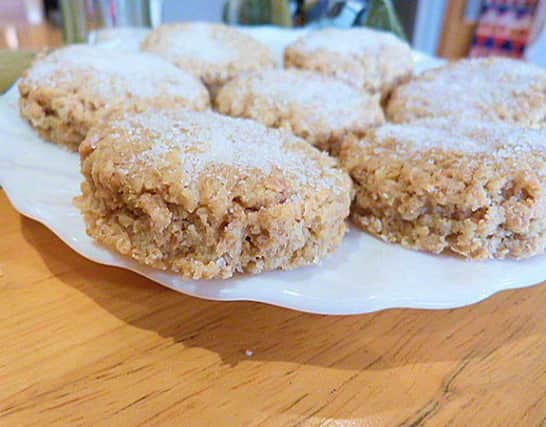Our cooking heritage should be cherished for future generations


There are many events organised to coincide with this (check out www.nigoodfood.com for details) and to help us celebrate our tradition and learn new skills. Pasta making classes, field to fork eating events and a myriad of activities in between. The inspiring thing about the world of food is that every day brings something new and invigorating.
Coinciding with this is the Bake a Difference campaign in support of Pancreatic Cancer Awareness Month. The charity is asking everyone to organise a baking event to raise funds. If you go to their website www.pancreaticcancer.org.uk you can find all the support material and information on how to help. If you want to experiment with a new recipe now is the ideal time.
Advertisement
Hide AdAdvertisement
Hide AdWe have a wonderful tradition of baking in this country and it’s comforting to see a revival and appreciation of our breads and traybakes. In the past we’ve overlooked them in favour of fancy French and Italian breads or pastries with more of a connection to Austria than Ahoghill!
I cooked at an event in London earlier this year and made some flakemeal biscuits to accompany the buttermilk cream with whiskey poached apples and honeycomb I’d made. The other chefs and food writers were impressed with these crisp treats and busily scribbled down the recipe. Sometimes we’re so busy looking for new things we forget the ones that have been part of our food culture. I had the pleasure of cooking dinner for one of my food heroes last weekend – Sheila Dillon, presenter of BBC Radio Four’s iconic Food Programme was here to make a show about tradition. I made a similar dessert and she flew back to London with a bag of the flakemeal biscuits! Butter, sugar, oats and flour – couldn’t be simpler but served warm straight from the oven and they’re very hard to resist. The recipe for them and the buttermilk cream is included here – add your imagination to what fruit you top the cream with.
Preserving is another part of our heritage that should be cherished. We’re well ensconced in Autumn now and the blackberry season is well passed but one fruit that is ripe for the picking is the sloe berry. These acrid, dusky berries from the blackthorn bush are at their best now. Traditionally they’re combined with sugar and gin, in a kilner jar, to make sloe gin. This is a simple effective way of capturing their essence. If you want to push the boat out a bit, they can be made into a jelly combined with apples. The jelly is amber hued and the sloes add a sultry, bitter edge to the apples. It’s delicious served with a slow baked ham or as an accompaniment to good cheese. Making jelly isn’t easy and there are pitfalls but seeing the fruits of your labour in a row of glistening jars is one of those precious, simple and rewarding pleasures. To make the jelly or gin you’ll need to source the sloes. Not the easiest to locate but, if you’re eagle eyed there are many around the country – you just need to do a bit of detective work to find out where they are. I’ve included recipes for the gin and the jelly this week – happy hunting for the ingredients!
I was at the Loup, just outside Ballyronan, last week at a community group who have a garden beside their hall. I showed them how to make soda farls and we ate them straight off the pan, split open, spread with butter and a good dollop of crab apple jelly. For me this is the quintessence of our food legacy – a historic bread developed to use the buttermilk left over from buttermaking and served with seasonal fruit suspended in time with a long established preservation method.
Try baking or making something new this month and if you can raise some money for charity in the process, all the better.